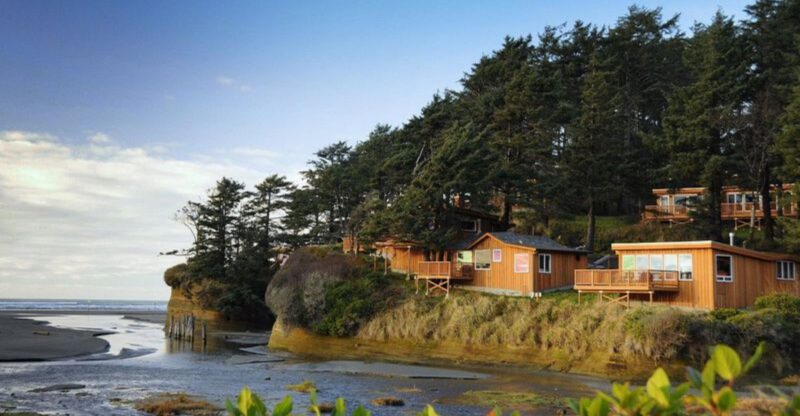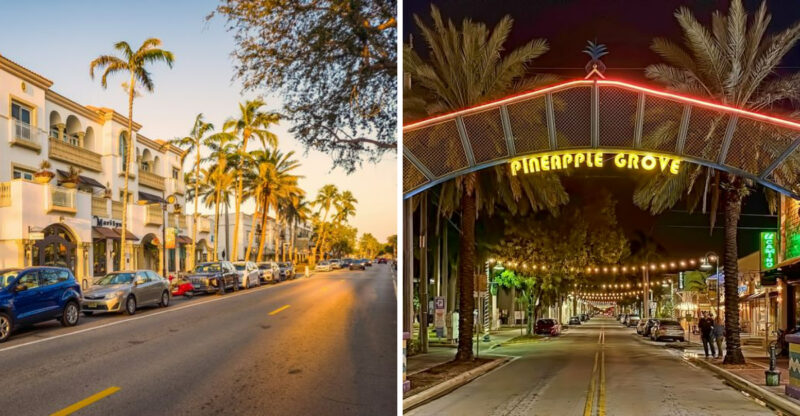Step Back In Time 13 Reasons This Abandoned Oklahoma Town Was The Heart Of The Wild West

Have you ever wondered what life was really like during the Wild West era? Ingalls, Oklahoma, offers an authentic glimpse into that legendary time when outlaws roamed freely and gunfights erupted on dusty streets.
This abandoned town, now a ghost of its former self, once served as a notorious hideout for some of America’s most wanted criminals. Join me as we explore the fascinating reasons why Ingalls earned its place in Wild West history.
1. The 1889 Land Run Started It All
Ingalls sprang to life during one of America’s most exciting events the Land Run of 1889. Thousands of eager settlers lined up at the border, waiting for the signal to claim their piece of unassigned territory. When the gunshot fired, chaos erupted as people raced across the plains on horses, wagons, and even on foot.
This massive migration transformed empty prairie into bustling communities almost overnight. Ingalls was among these new towns, attracting pioneers who dreamed of building better lives. Within just a few years, the settlement grew from nothing to a thriving frontier community.
The Land Run spirit defined Ingalls from the start, creating a culture of risk-takers and adventurers who weren’t afraid to challenge the unknown.
2. Population Boom Brought Frontier Energy
By the early 1890s, Ingalls had exploded to about 150 residents, which might not sound like much today but was substantial for a frontier town. Families built homes, merchants opened shops, and the community buzzed with the energy of people chasing the American Dream. Every new face brought fresh hope and determination to make this Wild West settlement work.
The town featured all the essentials a general store, saloons, a livery stable, and a hotel. These establishments became gathering places where locals swapped stories and conducted business. Life moved at a different pace back then, centered around hard work and community bonds.
This population surge made Ingalls feel alive and full of possibility for those brave enough to call it home.
3. Remote Location Attracted Dangerous Visitors
Situated about 10 miles east of present-day Stillwater, Ingalls occupied a perfectly isolated spot in the Oklahoma Territory. This remoteness made it difficult for law enforcement to monitor activities, creating an environment where questionable characters could operate freely. The long stretches of prairie provided excellent visibility for anyone watching for approaching lawmen.
Outlaws recognized these advantages immediately and began using Ingalls as a strategic hideout. The town’s distance from major settlements meant they could rest, resupply, and plan their next moves without constant scrutiny. Local residents often turned a blind eye to their infamous guests.
Geography played a crucial role in shaping Ingalls’ wild reputation and attracting the wrong crowd.
4. The Doolin-Dalton Gang Made It Their Hideout
When the infamous Doolin-Dalton Gang needed a safe haven, they chose Ingalls as their home base. This notorious group, also called the Wild Bunch, included some of the most wanted criminals in the American West. Led by Bill Doolin after the Dalton brothers met their fate, the gang terrorized banks and trains across multiple states.
The outlaws didn’t just hide in Ingalls they lived there openly, drinking in saloons and socializing with locals. Many townspeople actually enjoyed their presence, finding them charming and generous with their stolen money. The gang’s patronage even helped local businesses thrive during hard economic times.
Their presence transformed Ingalls from a simple frontier settlement into a legendary outlaw sanctuary.
5. The Battle of Ingalls Changed Everything
September 1, 1893, marked the bloodiest day in Ingalls history when U.S. Marshals launched a surprise raid on the Doolin-Dalton Gang. The lawmen crept into town before dawn, positioning themselves strategically around buildings where the outlaws were staying. What they didn’t anticipate was how fiercely the gang would fight back or how deadly the confrontation would become.
Gunfire erupted across the town’s main street, with bullets flying in every direction. When the smoke cleared, three marshals lay dead, along with at least one innocent bystander caught in the crossfire. Several others suffered serious injuries from the intense battle.
This violent showdown cemented Ingalls’ place in Wild West legend and proved just how dangerous frontier justice could be.
6. Three Lawmen Died Pursuing Justice
The cost of law enforcement in the Wild West became painfully clear during the Ingalls raid. Three brave U.S. Marshals Tom Hueston, Lafe Shadley, and Dick Speed lost their lives trying to bring the gang to justice. These men left behind families and communities that mourned their sacrifice in the name of establishing order on the frontier.
Their deaths shocked the nation and highlighted the extreme dangers lawmen faced in territories where outlaws operated with impunity. Newspapers across the country covered the story, making Ingalls infamous overnight. The fallen marshals became symbols of courage in the face of lawlessness.
Today, their bravery reminds us that taming the Wild West required tremendous sacrifice from those who wore badges.
7. Innocent Bystanders Paid the Ultimate Price
Caught in the crossfire between outlaws and lawmen, at least one innocent person died during the Battle of Ingalls. This tragic loss illustrated how ordinary citizens suffered when violence erupted in frontier communities. Families who simply wanted to build peaceful lives found themselves in danger through no fault of their own.
The civilian casualties made many residents question whether harboring outlaws was worth the risk. What seemed like harmless hospitality to charismatic criminals had led to deadly consequences for their neighbors. The reality of frontier violence hit home in the most devastating way possible.
These innocent deaths served as a harsh reminder that the Wild West’s romantic image came with a terrible human cost for everyday people.
8. The Town Tried to Clean Up Its Act
Desperate to shed its outlaw reputation, Ingalls passed a formal resolution on May 17, 1894, condemning all unlawful behavior. Town leaders hoped this official stance would signal to the outside world that they were serious about becoming a respectable community. The document promoted lawful conduct and promised cooperation with authorities pursuing criminals.
This resolution represented a turning point in how residents viewed their town’s identity. Many were tired of living in fear and wanted legitimate businesses to feel safe investing in Ingalls. The hope was that respectability would bring prosperity and stability to their struggling settlement.
Unfortunately, changing public perception proved much harder than passing a resolution, and the town’s notorious past continued haunting its future.
9. Vigilantes Destroyed the Saloon in Revenge
Just months after the town’s resolution, violence returned to Ingalls on July 3, 1894. Six armed men rode into town with a specific target saloon keeper Nichols, whom they accused of betraying Bill Dalton to authorities. Without trial or evidence, they took justice into their own hands in typical frontier fashion.
The vigilantes methodically destroyed Nichols’ saloon, smashing bottles, breaking furniture, and demolishing the building itself. Terrified residents watched as the men carried out their revenge, too frightened to intervene. The incident showed that lawlessness still gripped Ingalls despite official attempts at reform.
This act of vigilante destruction further damaged the town’s reputation and discouraged new settlers from moving to the dangerous community.
10. Highway Bypassed the Town Into Oblivion
Progress ultimately doomed Ingalls when Highway 51 and Highway 108 were constructed along routes that completely bypassed the town. In the early 20th century, automobile transportation began replacing horse-based travel, and towns not connected to major roads found themselves isolated. Businesses that depended on travelers passing through suddenly lost their customer base.
The highways routed traffic to other communities that offered more modern amenities and better access. Ingalls couldn’t compete with these advantages and gradually lost residents to more connected towns. What the outlaws and gunfights couldn’t destroy, modern transportation infrastructure accomplished effortlessly.
This geographic isolation sealed the town’s fate, transforming a once-vibrant settlement into a forgotten backwater that time left behind.
11. Population Dwindled to Nothing
As economic opportunities disappeared, Ingalls’ population steadily declined until virtually no one remained. Families who had invested years building homes and businesses packed their belongings and moved to more promising locations. The once-bustling streets that hosted 150 residents fell silent, with only the wind moving through empty buildings.
This exodus happened gradually over several years, but the result was devastating. Stores closed, homes were abandoned, and the community that once defined this spot on the prairie simply ceased to exist. The children who played in Ingalls’ streets grew up and left, never to return.
From frontier boom to complete abandonment, Ingalls’ story reflected the harsh realities many Wild West towns faced when circumstances changed.
12. Only Replicas Remain Today
Modern visitors to Ingalls find only replica structures standing where the original buildings once operated. The hotel, general store, saloon, and livery stable have been reconstructed to give tourists a sense of what the town looked like during its heyday. These reproductions help preserve the memory of Ingalls’ wild past for future generations.
While not authentic, the replicas serve an important educational purpose by showing how frontier towns were designed and functioned. Walking through these reconstructed buildings, you can imagine outlaws drinking in the saloon or marshals planning their raid. The physical space helps bring history to life in ways books cannot.
These replicas ensure that Ingalls’ incredible story continues being told even though the original town has vanished.
13. A Window Into Authentic Wild West History
Visiting Ingalls today offers something rare an authentic connection to genuine Wild West history rather than Hollywood fiction. This wasn’t a town created for tourists or movies; real outlaws actually hid here, and real lawmen died pursuing them. The ground beneath your feet witnessed actual frontier violence and the struggles of ordinary people trying to survive in harsh conditions.
Unlike theme parks or sanitized historical sites, Ingalls tells an unvarnished story of what the Wild West truly meant. The violence, the lawlessness, the desperate attempts at civilization, and the ultimate failure it’s all part of the authentic narrative. History happened here in raw, unscripted ways.
For anyone fascinated by the Wild West era, Ingalls provides an invaluable glimpse into reality behind the legends.






